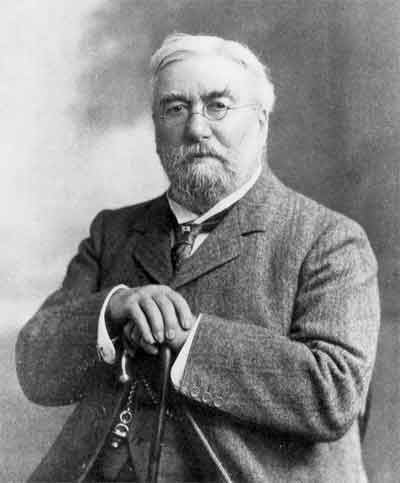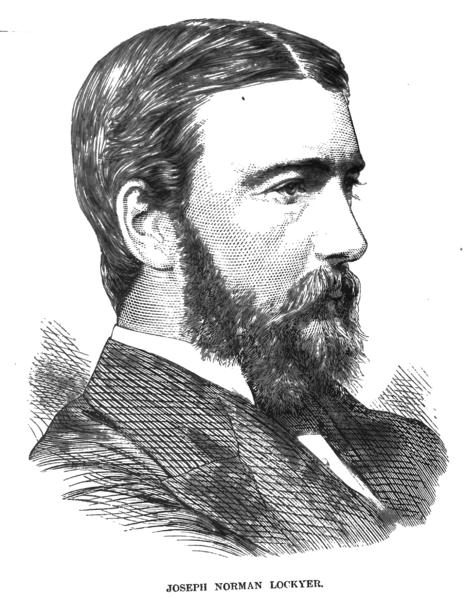<Back to Index>
- Astronomer Norman Joseph Lockyer, 1836
- Painter Alfred Joseph Casson, 1898
- Field Marshal Henry Paget, 1st Marquess of Anglesey, 1768
PAGE SPONSOR


Sir Joseph Norman Lockyer, FRS (17 May 1836 – 16 August 1920), known simply as Norman Lockyer, was an English scientist and astronomer. Along with the French scientist Pierre Janssen he is credited with discovering the gas helium. Lockyer also is remembered for being the founder and first editor of the influential journal Nature.
Lockyer was born in Rugby, Warwickshire. After a conventional schooling supplemented by travel in Switzerland and France, he worked for some years as a civil servant in the British War office. He settled in Wimbledon, south London, after marrying Winifred James. A keen amateur astronomer with a particular interest in the Sun, Lockyer eventually became director of the solar physics observatory in Kensington, London.
In the 1860s Lockyer became fascinated by electromagnetic spectroscopy as an analytical tool for determining the composition of heavenly bodies. During the solar eclipse of August 18, 1868, Lockyer observed a prominent yellow line from a spectrum taken near the edge of the Sun from Vijaydurg. With a wavelength of about 588 nm, slightly less than the so-called "D" lines of sodium, the line could not be explained as due to any material known at the time, and so it was suggested by Lockyer that the yellow line was caused by an unknown solar element. He named this element helium after the Greek word 'Helios' meaning 'sun'. An observation of the new yellow line also was made by Janssen at the same eclipse, and so he and Lockyer usually are awarded joint credit for helium's discovery. Terrestrial helium was found about 10 years later by William Ramsay. In his work on the identification of helium, Lockyer collaborated with the noted chemist Edward Frankland.
To facilitate the transmission of ideas between scientific disciplines, Lockyer established the general science journal Nature in 1869. He remained its editor until shortly before his death.
After his retirement in 1911, Lockyer established an observatory near his home in Salcombe Regis near Sidmouth, Devon. Originally known as the Hill Observatory, the site was renamed the Norman Lockyer Observatory after his death. For a time the observatory was a part of the University of Exeter, but is now owned by the East Devon District Council, and run by the Norman Lockyer Observatory Society. The Norman Lockyer Chair in Astrophysics at the University of Exeter is currently held by Professor Tim Naylor, who heads a star formation group there.
Lockyer died at his home in Salcombe Regis in 1920, and was buried there in the churchyard of St Peter and St Mary.